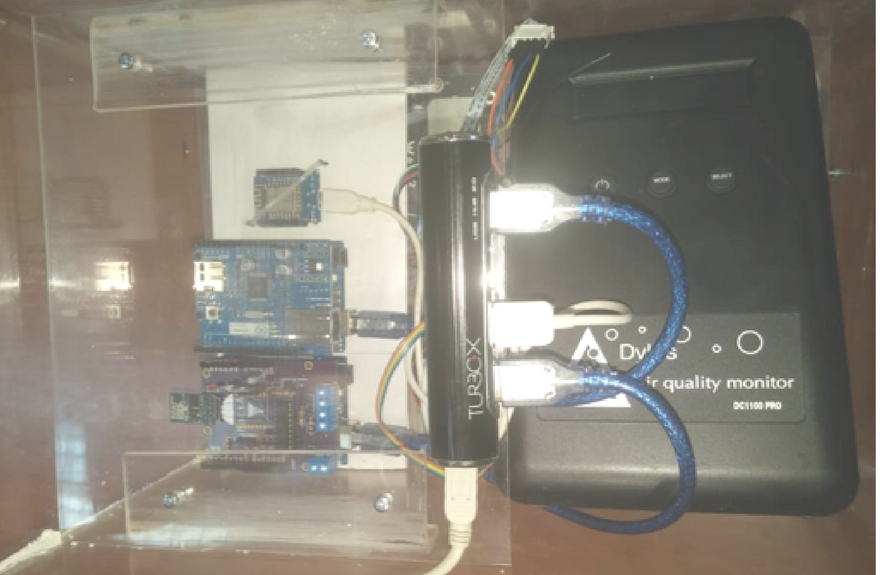One common criticism towards low-cost air quality sensors such as the ones used by hackAIR is that they cannot achieve the accuracy of more expensive reference stations. We set out to test this claim. The hackAIR air quality test station is now active in Athens since October 2017.
Using the setup pictured on the right, we wanted to make a single installation site for all hackAIR sensing devices, including all supported hardware and sensors. In particular, we were interested in understanding the impact of humidity and temperature on the measurements and whether the measurements would shift over time due to ageing. In addition, we included a commercial air quality sensor.
Sensors in the hackAIR air quality test station
- hackAIR home v2 (Wemos, sensors used: DfRobot SEN0177 and DHT11)
- hackAIR home v1 (Arduino Ethernet, sensor used: DfRobot SDS011)
- hackAIR home v1 (Arduino WiFi, sensor used: DfRobot SEN0177)
- hackAIR cardboard
- Dylos DC1100 (commercial reference sensor)
What did we find out?
We saw the measurements of the hackAIR low-cost sensors correlate sufficiently well with the reference measurements. hackAIR’s power saving protocol proved to be effective in protecting sensors from rapid ageing: we did not detect any shift after almost 6 months of continuous measurements.
Humidity and temperature constitute two significant factors that influence the quality of fine particles and thus impact the corresponding sensor recordings. hackAIR is using a normalisation function on the sensor itself to adjust the air measurements in these situations.
During the testing period, the devices showed acceptable network stability: no disconnections were recorded. We were able to fix a minor problem with the ethernet http connection.
While this initial test site in Athens is still operational, we want to set up an additional installation next to an official measuring sites to be able to directly compare hackAIR measurements with official air quality information.




